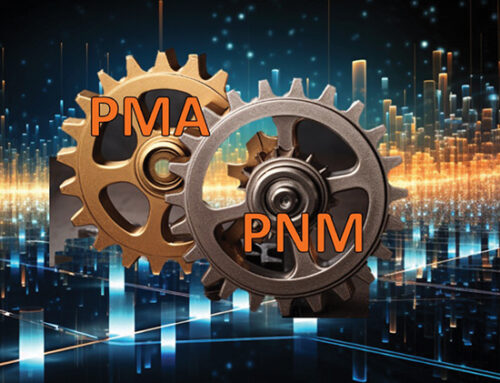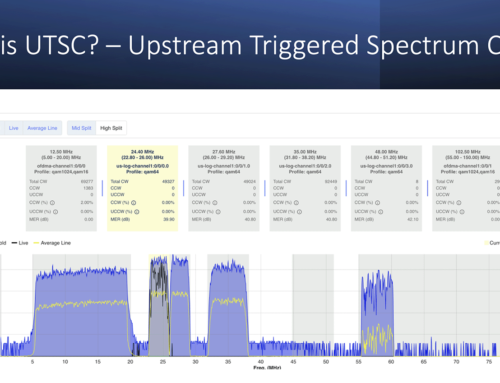DOCSIS 3.1 has gone from concept to silicon. Proactive Network Maintenance (PNM) is emerging as a staple in the industry, and we are seeing the cable rapidly evolving into an app-driven industry. It’s an exciting time to be in cable!
In my last article I mentioned how ‘everything is becoming an app’. This has been mentioned recently in numerous articles. The typical subscriber – maybe even you – really likes the concept of apps. Think of how Netflix has transformed our industry. Netflix is really an app that let’s subscribers watch TV over DOCSIS. TV has become an app. Netflix, the number one video subscription service according to SNL Kagen, has had an astonishing impact on the growth of traffic over our DOCSIS network. Netflix’s recent testing on 4k Ultra HD video indicated streaming requirements of up to 15 Mbps.
Industry data shows average year-over-year (CAGR) downstream growth of 50% on DOCSIS traffic. Many operators feel the impact of this growth on a regular basis as CMTS utilization continues to skyrocket, along with upgrades and node splits. Subscribers complain about speedtest.net results to Operators and their appetite for speed and service is never quenched. Unfortunately there is not an app to fix data growth resulting from the over-the-top (OTT) apps like Netflix. Instead it’s likely that subscriber driven apps will only increase our CAGR numbers from 50% to even higher numbers. We look to DOCSIS 3.1 as a means to manage the tsunami of traffic. I’ve worked with clients who just two years ago adamantly stated they would never buy a DOCSIS 3.0 CMTS. Recently, due to subscriber traffic increases, these same clients have upgraded to DOCSIS 3.0. Demand is what will drive DOCSIS 3.1 upgrades and ultimately a newer DOCSIS version or even fiber to the home.
Having been in the cable industry for some time and also a geek, I am finding the current state of the industry to be more exciting now than any time in my career. DOCSIS is evolving rapidly. When the DOCSIS 1.0 standard was released it was a relatively basic means for transporting Ethernet over the HFC network. It used low order modulation techniques, a maximum of 256-QAM in the downstream and no more than 16-QAM in the upstream. For most operators back then supporting 16-QAM was not an easy task.
Today we are proposing 1024-QAM subcarriers in an OFDM channel for DOCSIS 3.1. Further we plan to transport 4096-QAM in the downstream. How did we get here and what is driving this? Subscriber demand and technology innovation.
CableLab’s(R) InGeNeOs(™) working group has done some amazing work over the past few years in exploiting the hidden troubleshooting power locked in cable modems and CMTSs. What would you have said to me a few years ago if I told you that you would have the power of a spectrum analyzer in every home? Maybe that I was spending too much time on the Star Trek Holodeck. Today a technician can just press a button on their iPad and they can get the 90 MHz to 1 GHz spectrum of the subscriber’s home without ever setting foot in the subscribers home.
No longer will a cable operator need to schedule a costly truck roll to a subscriber’s house, in the process annoying the subscriber, to see if there is a suckout? Now there is an app for that. We call it PNM (Proactive Network Maintenance).
Figure: Screen Capture of a Cable Modem’s Spectrum Analyzer Function
The PNM movement is catching on in the industry with Comcast being at the forefront with it’s proprietary app. However, the PNM app is now also available to all cable operators commercially and something to be excited about! Offering cost savings to operators, operational efficiencies, and a better quality of experience to subscribers.
Everything that has been done with PNM to date was reversed engineered since there were no standards or specifications designed for PNM originally in the DOCSIS specification.
In the DOCSIS 3.1 specification PNM is no longer an after-thought. It has been taken into careful consideration. We wanted to make sure that all of the tools we have been using today for proactively maintaining the plant are not only preserved in the DOCSIS 3.1 specification, but are also greatly enhanced.
As an example, one common impairment that you have heard about or even battled in the field is laser clipping. There are a number of ways to identify laser clipping if you are a skilled user of spectrum analyzers. The challenge is finding those skilled users. There are never enough to go around, but there is plenty of laser clipping. The laws of supply and demand are never in our favor.
An example of just one awesome DOCSIS 3.1 PNM tool is laser clipping identification. Let’s say that you just happen to have a DOCSIS 3.1 CMTS and some DOCSIS 3.1 cable modems (in a year or two). The DOCSIS 3.1 specification defines a number of histograms, one of which identifies laser clipping. If there is no laser clipping the histogram has a nice Gaussian distribution (read looks like a haystack). If there is laser clipping then the histogram will have a spike on the right hand side of the haystack, with the amplitude of spike proportional to the magnitude of the laser clipping. The histogram is generated by the CMTS (or cable modem if the laser clipping occurs in the downstream), which means detection becomes quite easy.
There is a PNM server that monitors the CMTS and cable modems. The PNM server continuously analyzes the histograms for haystacks that have a spike. When a spike appears the PNM server notifies the appropriate parties that laser clipping is occurring. You just review your PNM App to see where and how bad the laser clipping is. Here is a concept of what the histograms will look like in practice with and without laser clipping:
Histogram with No Laser Clipping (Courtesy Broadcom)
Histogram with Laser Clipping (Courtesy Broadcom)
With PNM in DOCSIS 3.1 we have eliminated the need for complex spectrum analysis, looking for spikes above 42 MHz (or 65 MHz for those outside of North America). Now we have the proverbial “Easy Button”.
The final frontier for PNM, which we are just starting to explore is the connected home. Today we lack visibility into the wireless network of the connected home and it can therefore be a dark place for many operators. Cable operators have difficulty gauging the quality of the subscriber’s WiFi networks, the number of connected WiFi devices, and the amount of WiFi traffic. We hear a lot of talk about The Internet of Things (IoT), which describes the explosion of many more home-based connected devices for automation, security and also fun. This is when your refrigerator starts talking to your toaster via your smartphone. For some this is scary and for others it’s exciting. For us as an industry it means a lot more connected devices in the home where subscribers will demand a high level of quality of service.
On the PNM front we are looking at how to provide cable operators with visibility into the home to help them manage and ensure our subscribers have a better quality of experience. We are focusing on looking past the cable modem and proactively monitoring every connected device the subscriber uses.
Our subscribers do not care that we can offer them 100 Mbps to the their cable modem. They care about their Apple Tv streaming their Netflix Ultra HD or Hulu at 15 Mbps to their brand new 4k TV without ever seeing a “Buffering…” page. For cable operators to do this we need to proactively maintain the HFC plant, the DOCSIS network and the connected home. It’s a tall order, but we are making tremendous progress as an industry to meet the expectations of our demanding subscribers.
Originally published in Broadband Library 2015 by Brady Volpe








Leave a Reply